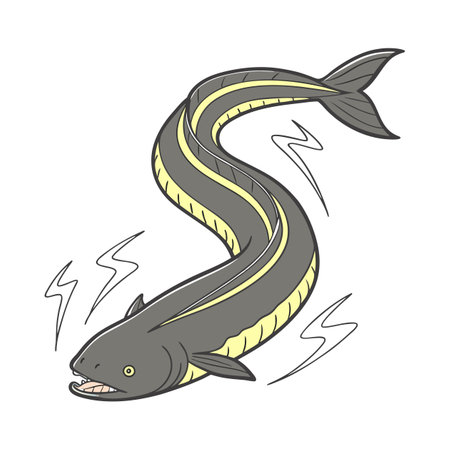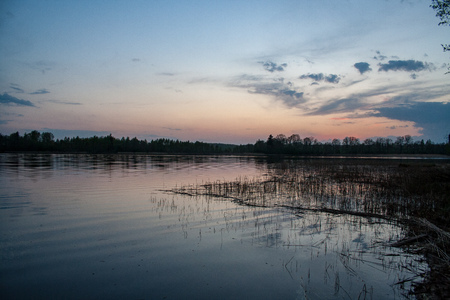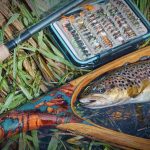Understanding Trout Behavior in Spring
Spring is one of the best times of the year to go trout fishing, but to really take advantage of the season, its important to understand how trout behavior changes as winter turns into spring. Factors like rising water temperatures, increased insect activity, and trout spawning cycles all play a big role in where trout go and what they eat.
Rising Water Temperatures
As the ice melts and water begins to warm up, usually between 45°F and 60°F, trout become more active. Cold-blooded by nature, trout’s metabolism speeds up with the temperature, which means they need to feed more often. Early in the season, you’ll find them in deeper pools where the water warms slowly. But as spring progresses, they move toward shallower runs and riffles during feeding times.
Water Temperature and Trout Activity Chart
| Water Temperature (°F) | Trout Activity Level | Fishing Tip |
|---|---|---|
| 35–44°F | Low – sluggish feeding | Use slow presentations near deep pools |
| 45–55°F | Moderate to High – increasing activity | Try nymphs and small streamers in runs and riffles |
| 56–65°F | High – peak feeding time | Experiment with dry flies and active retrieves |
Increased Insect Activity
With warmer weather comes a boom in insect life. Midges, mayflies, caddisflies, and stoneflies begin hatching more regularly in the spring. Trout take full advantage of this buffet, especially during hatch windows that occur late morning or early evening. Matching your bait or fly to whats hatching—or using “match-the-hatch” tactics—is key to getting bites.
Common Spring Hatches and Fly Patterns
| Insect Type | Hatch Time | Recommended Fly Pattern |
|---|---|---|
| Midges | All day (early spring) | Zebra Midge, Griffiths Gnat |
| Mayflies | Late morning to afternoon | Blue Wing Olive, Adams |
| Caddisflies | Afternoon to evening (late spring) | Elk Hair Caddis, Sparkle Pupa |
The Spawning Cycle Effect
Certain species of trout—especially rainbow trout—spawn in the spring. During spawning season, they move upstream into gravel-bottomed areas with good oxygen flow. While many anglers choose not to target actively spawning fish out of respect for conservation efforts, it’s common to fish just downstream from these areas. After spawning, trout are hungry and aggressive feeders trying to recover energy, making them easier targets for anglers.
Where to Find Trout During Spring Spawning Season:
- Pre-spawn: Holding near deeper pools close to gravel beds.
- Spawning: Found on shallow gravel flats with moderate current.
- Post-spawn: Moving back to deeper runs and aggressively feeding.
By understanding how these natural changes affect trout behavior, youll be better prepared when you hit your favorite fishing spots this spring. In the next section, well explore some of the best locations across the U.S. for spring trout fishing.
2. Top Spring Trout Fishing Locations in the U.S.
Spring is one of the best times to go trout fishing in the United States. As water temperatures rise and fish become more active after winter, anglers can enjoy great action in rivers, lakes, and streams across the country. Below are some of the top states and specific fishing spots that are known for excellent spring trout fishing opportunities.
Colorado
With its abundance of cold-water rivers and high-altitude lakes, Colorado is a prime destination for trout anglers. The state offers both wild and stocked trout in scenic locations.
Top Spots in Colorado:
- Fryingpan River – Famous for large rainbow and brown trout, especially below Ruedi Reservoir.
- South Platte River (Deckers section) – A popular fly fishing spot with consistent trout activity throughout spring.
- Blue River – Easily accessible and stocked regularly, making it a great place for beginners.
Montana
Known as “Big Sky Country,” Montana boasts legendary trout waters that draw anglers from around the world. Springtime brings hatches and hungry fish ready to strike.
Top Spots in Montana:
- Bighorn River – Offers clear water and great spring hatches; expect rainbow and brown trout.
- Gallatin River – Scenic and productive, especially near Big Sky and Bozeman.
- Madison River – One of Montana’s most famous fisheries, ideal for early-season dry fly fishing.
Pennsylvania
Pennsylvania is home to a rich tradition of trout fishing, with hundreds of miles of stocked and wild trout streams. Spring is prime time here due to regular stocking by the Pennsylvania Fish & Boat Commission.
Top Spots in Pennsylvania:
- Pine Creek – Known as “The Grand Canyon of Pennsylvania,” this creek offers beautiful scenery and great fishing.
- Letort Spring Run – A famous spring creek offering technical but rewarding fly fishing opportunities.
- Lackawanna River – A recovering urban river thats now a stronghold for wild brown trout.
California
From alpine lakes to coastal streams, California provides diverse options for spring trout fishing. Snowmelt feeds many rivers, creating perfect conditions for active trout.
Top Spots in California:
- Hat Creek – A designated Wild Trout Water that remains cold year-round, ideal for spring angling.
- Kern River – Offers both wild and stocked trout, with easy access from Southern California cities.
- Lassen Volcanic National Park – High-elevation lakes thaw out in spring, revealing hungry rainbow and brook trout.
Tennessee
The Great Smoky Mountains provide a beautiful backdrop for spring trout fishing. With cool mountain streams teeming with fish, Tennessee is a must-visit during the season.
Top Spots in Tennessee:
- Great Smoky Mountains National Park – Features over 700 miles of fishable streams with native brook and wild rainbow trout.
- South Holston River – Known for its large brown trout population and reliable hatches year-round.
- Tremont Area Streams (Middle Prong Little River) – Easy access with good numbers of catchable-size wild rainbows.
Quick Overview: Best Spring Trout Fishing Locations by State
| State | Main Waters | Main Species |
|---|---|---|
| Colorado | Fryingpan River, South Platte River, Blue River | Rainbow & Brown Trout |
| Montana | Bighorn River, Gallatin River, Madison River | Browns & Rainbows |
| Pennsylvania | Pine Creek, Letort Spring Run, Lackawanna River | Browns & Brook Trout |
| California | Hat Creek, Kern River, Lassen NP Lakes | Browns, Rainbows & Brooks |
| Tennessee | S. Holston River, GSMNP Streams, Middle Prong LR | Browns & Rainbows (Native Brooks too) |
No matter where you go this spring, these destinations offer some of the best chances at landing quality trout while enjoying the beauty of nature coming back to life after winter. Whether youre fly fishing or using spinning gear, these waters are worth checking out when planning your next trip.

3. Go-To Baits and Lures for Spring Trout
Spring trout fishing can be incredibly rewarding if you know what baits and lures to use. As water temperatures rise and trout become more active, they’re on the lookout for easy meals. Knowing what to throw in front of them can make all the difference. Let’s break down some of the most effective bait and lure options that consistently produce results during the spring season.
Natural Baits That Always Work
When it comes to trout, natural baits are a classic choice—especially in early spring when fish are still sluggish from winter and looking for familiar food sources. Here are some top picks:
| Bait | Why It Works | How to Use |
|---|---|---|
| Worms (Nightcrawlers) | Trout can’t resist a live, wiggling worm, especially in stained or moving water. | Thread onto a small hook with a split shot weight; drift naturally with current. |
| Minnows | Mimic small forage fish that trout feed on as temps warm up. | Hook through the lips or back; fish under a float or free-line in slow pools. |
| Salmon Eggs | A favorite for stocked trout and effective in clear, cold streams. | Use a single egg or cluster on a size 10–14 hook with light line. |
| Corn | Simple, affordable, and surprisingly effective for stocked rainbows. | Thread one or two kernels onto a small hook; use with light tackle. |
Artificial Lures to Trigger Strikes
If youre covering more water or targeting wild trout, artificial lures can help trigger reaction bites. These are some of the top-performing types during spring:
| Lure Type | Best For | Tips for Use |
|---|---|---|
| Inline Spinners (e.g., Rooster Tail, Panther Martin) | Streams and rivers with moving water | Cast upstream and retrieve slowly with occasional twitches; silver blades work well in clear water, gold in murky. |
| Spoons (e.g., Kastmaster, Little Cleo) | Lakes or deeper pools where trout are suspended | Use a steady retrieve with occasional pauses to flutter the spoon—it mimics an injured baitfish. |
| Soft Plastics (e.g., Trout Magnets, mini grubs) | Ponds, creeks, and tight spots where subtle presentation is key | Fish on a small jig head; bounce along bottom or dead-drift in current seams. |
| Crankbaits (ultra-light models) | Larger streams and lakes holding bigger trout | Select natural colors like brown trout or rainbow patterns; crank slowly near structure. |
Quick Tips for Success
- Match the hatch: Observe what natural food is present and try to imitate it.
- Light line: Use 2-6 lb test monofilament or fluorocarbon for better bite detection and stealth.
- Vary your retrieve: Sometimes just changing speed or adding a pause can turn followers into biters.
The Takeaway
The right bait or lure depends on where youre fishing and how active the trout are. Keep both natural and artificial options in your tackle box this spring so you’re ready for anything that swims by.
4. Presentation Techniques That Get Results
When it comes to spring trout fishing, how you present your bait or lure can be just as important as what youre using. Trout are smart and easily spooked, especially in clear spring waters. That’s why mastering your presentation techniques is key to getting bites. Let’s break down some practical tips to help you make your bait look more natural and irresistible to trout.
Drift Techniques for Natural Movement
One of the most effective ways to present bait in rivers and streams is by using a natural drift technique. This means letting your bait flow with the current at the same speed as the water, mimicking how food naturally drifts downstream.
- Use lightweight tackle: Lighter line and split shot help your bait move freely without dragging.
- Mend your line: In fly fishing, mending helps prevent drag so your fly floats naturally.
- Position upstream: Cast upstream and let the current carry your bait toward the trout.
Speed Control Matters
Whether youre casting a spinner, trolling a crankbait, or drifting live bait, controlling your retrieval speed makes a big difference. Trout may be sluggish in early spring but aggressive in warmer water — so adjust accordingly.
| Water Temperature | Trout Behavior | Recommended Speed |
|---|---|---|
| Below 50°F (10°C) | Sluggish, less active | Slow and steady |
| 50–60°F (10–15°C) | Moderately active | Medium pace with occasional pauses |
| Above 60°F (15°C) | Aggressive feeders | Faster retrieves with erratic movements |
Stealth Approaches: Don’t Spook the Trout
Spring waters are often clear, meaning trout can see you coming from a distance. Staying stealthy can make all the difference between a great day and going home empty-handed.
- Wear natural colors: Earth-toned clothing helps you blend into the environment.
- Avoid heavy footfalls: Vibrations travel through water and alert fish to danger.
- Approach from downstream: Trout face upstream, so coming from behind keeps you out of their line of sight.
Tuning Your Presentation for Water Conditions
The condition of the water—whether its fast-moving, murky, or crystal-clear—will change how you should present your bait or lure. Heres a quick guide:
| Water Condition | Bait/Lure Type | Presentation Tip |
|---|---|---|
| Clear & Calm | Nymphs, small spoons, live worms | Smooth, slow drifts; light line; natural colors |
| Muddy or Murky | Bright-colored spinners or scented baits | Add vibration or scent; slower retrieve so trout can track it better |
| Fast Current | Spoons, weighted nymphs, salmon eggs | Add weight to keep bait near bottom; short controlled drifts |
Pro Tip:
If youre not getting bites, change one thing at a time — whether its speed, depth, or lure color — to find what works best in that moment.
The more natural your presentation looks to a trout — whether youre using live bait or artificial lures — the better chance you have at hooking one this spring.
5. Gear Recommendations for Spring Trout Fishing
When it comes to spring trout fishing, having the right gear can make all the difference. The water is often cold and clear, and trout tend to be more active but also easily spooked. That means you’ll need equipment that offers both sensitivity and versatility. Here’s a simple breakdown of what to look for in rods, reels, lines, and other essentials.
Rods
A good trout rod for spring should be lightweight with a fast or moderate action. Sensitivity is key so you can detect subtle bites, especially when using smaller baits or lures.
| Rod Type | Length | Action | Best For |
|---|---|---|---|
| Ultralight Spinning Rod | 6 – 7 | Fast | Casting small lures, finesse fishing |
| Light Power Spinning Rod | 66″ | Moderate-Fast | Bait fishing, general use |
Reels
A spinning reel is usually the go-to for spring trout fishing due to its ease of use and versatility. Look for a size 1000 to 2500 reel with a smooth drag system.
- Smooth Drag: Essential for handling sudden runs from trout without snapping your line.
- Lightweight Design: Helps reduce fatigue during long sessions on the water.
Fishing Line
Your line choice depends on your presentation style and water clarity. In the clear waters of spring, lighter lines are less visible and more effective.
| Line Type | Pound Test | Description |
|---|---|---|
| Monofilament | 2-6 lb | Easiest to handle, good for beginners, stretches slightly to absorb shock. |
| Fluorocarbon | 4-8 lb | Naturally sinks and nearly invisible in clear water—great for spooky trout. |
| Braided (with fluoro leader) | Mainline: 10-15 lb Leader: 4-6 lb fluoro |
Tons of sensitivity and casting distance. Use a fluorocarbon leader for stealth. |
Tackle Essentials
The right accessories can help you stay versatile on the water:
- Tackle Box: Organize different bait styles like inline spinners, soft plastics, and small crankbaits.
- Snap Swivels: Make lure changes quick without retying knots constantly.
- Bait Hooks & Split Shot: Ideal for live bait setups such as worms or salmon eggs.
Trouble Choosing?
If youre just getting started, a well-balanced ultralight spinning combo with 4 lb monofilament line is a great all-around setup for most spring conditions. It’s sensitive enough for light bites but strong enough to handle decent-sized fish.
The key is staying flexible—spring weather and water levels can change quickly, so having gear that adapts will keep your lines tight and your cooler full.
6. Local Regulations and Ethical Angling Tips
Before heading out for spring trout fishing, its important to understand and follow your states fishing laws. Each state has its own rules about trout seasons, bag limits, size restrictions, and bait types. These regulations help protect fish populations and ensure a sustainable fishery for future generations.
Check State-Specific Fishing Laws
Always check with your local Department of Natural Resources (DNR) or Fish and Wildlife agency before your trip. Most states have websites with updated information, downloadable guides, and maps showing legal fishing zones.
| State | Trout Season | Bait Restrictions | Bag Limit |
|---|---|---|---|
| California | Open year-round in most areas | No live bait in some waters | 5 trout per day |
| Colorado | Year-round with exceptions | No scented baits in artificial-only waters | 4 trout per day |
| Pennsylvania | Opens mid-April statewide | Artificial lures only in designated areas | 5 trout per day (during regular season) |
Always carry a valid fishing license and be aware of any special regulations for the body of water you’re fishing.
Practice Catch-and-Release When Possible
If youre not planning to eat the trout, consider practicing catch-and-release to help maintain healthy fish populations. Here are a few tips:
- Use barbless hooks or pinch the barbs down with pliers.
- Wet your hands before handling the fish to protect their slime coating.
- Avoid keeping the fish out of water for more than 10 seconds.
- Support the fish gently under the belly and tail when releasing.
Conservation-Friendly Habits on the Water
Being an ethical angler goes beyond just following the rules. It’s about respecting nature and other anglers too. Here are some simple practices to keep in mind:
- Pack out all trash, including discarded fishing line and bait containers.
- Avoid trampling sensitive stream banks or spawning areas.
- Keep noise levels down to preserve a peaceful environment for wildlife and fellow anglers.
- If you see others violating regulations, report it to local authorities rather than confronting them directly.
Fishing responsibly helps ensure that our favorite spring trout spots stay healthy and productive for years to come.


